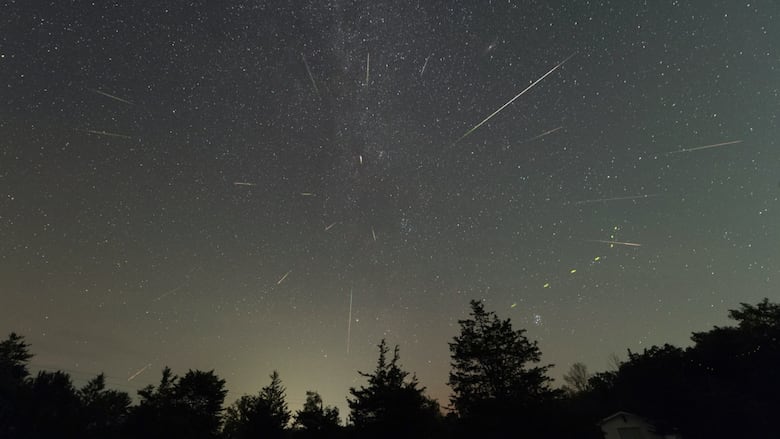Attention stargazers! It's time for one of the best meteor showers of the year — the Perseids
While a nearly full moon will make seeing faint meteors difficult, there could still be some stunning streaks

You know that summer is winding down when it's time for the Perseid meteor shower.
The shower is considered one of if not the best of the year, mainly due to it being summer in the northern hemisphere, when the skies tend to be clear (unless there's smoke) and the weather is warmer.
This is contrary to the Geminid meteor shower, which rivals the Perseids in terms of how many meteors can be seen per hour, but occurs in December when it tends to be cloudier and much colder.
You can catch a meteor on any given night, particularly if you're outside of a city, away from light pollution. But meteor showers are special. Instead of the periodic streak against the starry sky, you can potentially see a dozen or more an hour.
When to watch
We get this stunning and typically reliable shower each year thanks to debris left over from Comet 109P/Swift-Tuttle, which has an orbit of 133 years and was last in the inner solar system in 1992.
Every year, Earth plows through the comet's debris, which in turn enters Earth's atmosphere, burning up as beautiful streaks in the sky.
Most meteor showers get their name from the constellation from which the meteors seem to originate, called the radiant. In this case the radiant is the constellation Perseus, which begins to rise in the northeast around 9 p.m. local time.
But it's important to note that you don't have to look directly at the constellation. Just look up.
This year, the shower runs from July 17 to Aug. 23, but it peaks on the night of Aug. 12-13. On this night, under ideal conditions — dark, cloud-free, smoke-free, clear skies — the shower could produce roughly 100 meteors per hour.
However, you're unlikely to see that many or even half of them this year due to one major problem: the moon.
Down but not out
The moon will be roughly 84 per cent illuminated, which means it will wash out all but the brightest meteors.
"This year, the moon just kills them," said Peter Brown, Canada Research Chair in Planetary Small Bodies and professor at Western University's department of physics and astronomy in London, Ont.
The other issue is smoke from wildfires.
"It's just like cloud. It's going to decrease the the amount of light that gets through," Brown said. "So, you know, if you have the full moon and there's still quite a bit of smoke or high cloud, you're probably only looking at a handful of meteors an hour."
But the great thing about the Perseids is that they tend to produce very bright meteors and even some fireballs. As well, you can get some really good "earth grazers" — meteors that skim our atmosphere. These last longer than a typical meteor streaking across the sky.
"On the 12th, and even better, on the 13th, there'll be an hour or two right after sunset where the moon either won't be there [or] it'll be low and the radiant is low, but the activity is high enough and you'll see the grazers," Brown said.
"You're not going to see 50 of those an hour, but you might see a handful, and they last a long time. They're super spectacular. If ever a meteor looks like fireworks, it's a grazing Perseid meteor."
So, the message is, don't give up. Grab a blanket, lie down — with the moon behind you — and look up. The Perseids rarely disappoint.
"Yes, the moon will be up. It'll be bright, but there'll be so many meteors and bright ones, you'll still see a pretty decent show," Brown said.

